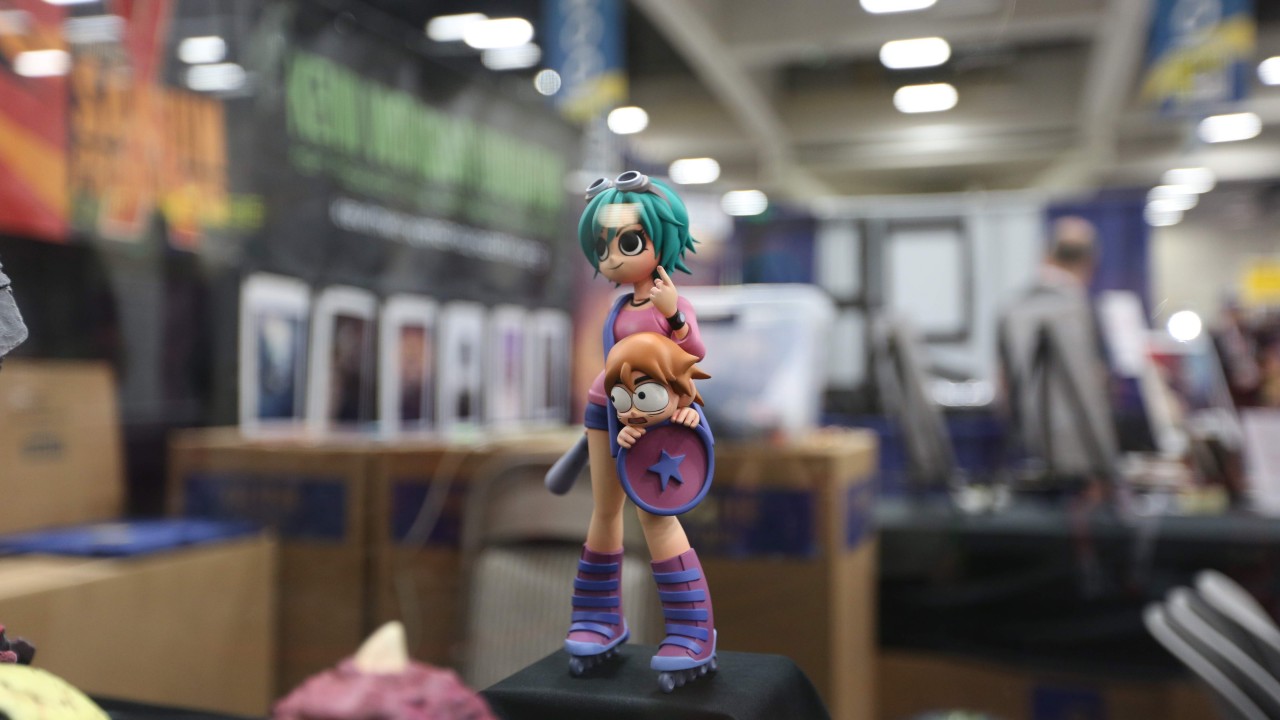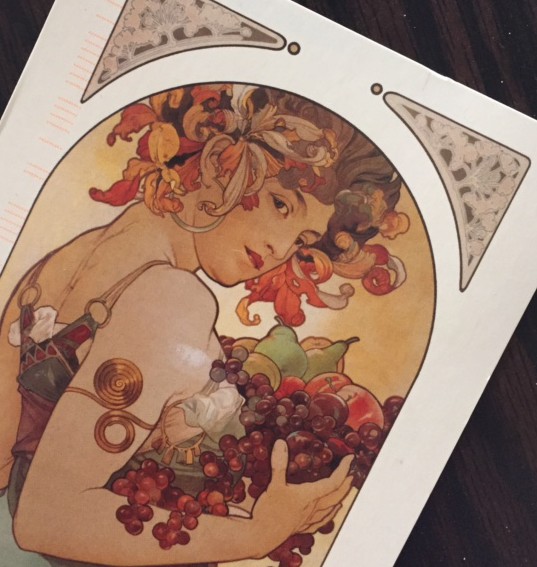Listen, the 90s were great for Indian music. A far cry from the end of the previous decade, when the average Hindi song would suck 8-9 minutes of your life, and if you had the fortitude to stick with it to the end, your brain had either internalized this prolonged sonic assault, or found itself completely repulsed. Film music was kind of just there, playing on weekdays on National TV and All India Radio, heard in hotels and barbershops. Most film soundtracks followed a template [ref]One-minute instrumental introduction. First verse. Chorus. First instrumental interlude. Second verse. Chorus. Second instrumental interlude that sounded exactly like the first. Third verse, exactly like the second. Chorus. First verse again. Chorus again, a little speeded up. Fade-out or abrupt end.[/ref] that had been unchanged for decades, sung, written and composed by folks who had either been around for decades or were too entrenched in the system to go beyond the commercial bottom-line. Yes, there were the annual musical blockbusters that shattered records and launched careers. But in general, the consensus was that the industry was broken, that the age of giants had gone with the passing of Messrs Rafi and Kumar. All that remained were pale echoes of their vocal legacy, zombie nightingales, and the crazy disco hedonism brought about by Bappi Lahiri and Kalyanji/Anandji, in the First Age of synthesizers.
In many ways, this decade embodied a period of dramatic change, a time when both the form and the market surrounding it somehow managed to brush off the grime and creakiness of the previous years. By the end of those ten years, those 8-9 minutes had shrunk to a more manageable 4-6 minutes, and the film song, instead of being an excuse for a restroom break in the middle of the proceedings, became one of the reasons you would go watch a movie in the theater. If there was a common theme to all that transpired in the industry in that timespan, it was that Indian film music wanted to – and did – break out of its provincial roots and limited audience. The music scene brashly tried on everything, unsure of what worked on its awkward frame, embarrassing itself in the bargain. Yes, some of those experiments fail, but when they work, you’ll notice an unmistakable swagger and strut. That made those ten years the gangling teenage years of Indian music—awkward, experimental, hormonal, and mercurial. The best of times, the worst of times; when grand orchestras, all shriek and bombast, yielded to a more refined use of electric guitar solos, piano and synth flourishes; when the gentle, pabulum rhythm of dholkis and bongos gave way to sequenced drum machines and crunchy 4/4 bass thumps; when the rigid distinction between sur and besur began to blur. Significantly, musical instruments no longer remained unobtrusive little minions cowering in the background as mere “accompaniments;” they gamboled around the song’s vocals on equal terms. By 1999, a song was not just voice and lyrics and tune; it grew to become a complete soundscape.
It was a decade when a fresh generation of musicians and composers, armed with a new generation of recording technologies and techniques, began to extricate the industry out of the talent vacuum that had plagued it for years. Singers like Udit Narayan and Kumar Sanu began the decade with a well-established resume of their own while Anuradha Paudwal, Kavita K, and Alka Yagnik chipped away at the Mangeshkar sisters’ hegemony. By the middle of the decade, there were quite a few brash new kids on the block. The likes of Shaan and Sagarika and Sonu Nigam began their careers from behind the shadows of stalwarts, slyly moving out into the sun when their voices gained popularity; others – like Sunidhi Chauhan, Ila Arun, Hariharan and Shankar Mahadevan – had voices with distinct personalities unfettered by past expectations, and found non-judgmental, appreciative audiences.[ref]I cheered for Sunidhi that Tuesday night she took the crown on Meri Aawaz Suno, as Lata Mangeshkar and Annu Kapoor looked on. None of us had any idea what was coming, obviously. I remember being so happy about how this young girl my little sister’s age sounded.[/ref]Semi-retired singers written off as irrelevant and over-the-hill found themselves a new generation of fans; classical and folk musicians, long marginalized by the mainstream machine and who had in turn turned their noses up at their bland offerings were embraced back into the fold. This also meant that the kind of vocal range that had thus far passed for mainstream slowly began to accommodate other permutations. Convention demanded a booming male baritone and a trilling female singer on the upper soprano range; by the end of the decade, an earthy contralto female voice taking the lower registers while the male voice soared to the heavens not only found critical acceptance, but also burnt up the charts.
Tunes of the past came back repackaged , sung by voices both familiar and unheard. On an aside, even song-titles of the past insinuated themselves once more into the industry – by becoming names of new, hip movies. Along with our baggy Levis and the wonders of Cable TV came Indi-pop, at first a hesitant, self-aware blend of global sounds and visuals which then metamorphosed into something in its own right. With multiple TV channels also came awareness – it became apparent how Southall bhangragga beats and the lush soundscapes of Vangelis and Peter Gabriel or – closer still – the devotional Sufi qawwalis of Pakistan were adapted, mangled and blended into sounds palatable to Indian ears. You faced bitter disappointment when you realized that your favorite tune on TV from last week was actually a Top 40 Hit on another continent six months ago, or that five different movies had versions of the same chart-busting song, each by a different composer. Indian film music was still part-jugaad in this tumultuous decade, until it wasn’t. [ref]As Jaaved Jaffrey put it succinctly in a memorable song, “chor-us”.[/ref]
The words, good Lord. We hummed the many names of love, in Urdu and Hindi and brajbhasha and khari boli and English, and giggled at inventive acronyms for mundane words[ref]ILU. 1-4-3. LML Baba[/ref]. The biggest name in the business thought nothing of lip-synching about kisses promised on a Friday, and neither did we. Lyricists, egged on by changing times and a generation that both watched and became Bold and Beautiful, unleashed a torrent of rudeness from their pens. It became okay to speak of creaking beds on wintry nights, of opening up the windows of love hidden behind blouses with brutal, raunchy directness – even the word “sexy” was no longer off-limits, shock and awe! More fodder for raging hormones when everyday words became sexual metaphors – cricket, chilli peppers, the cooing of pigeons, chicken fry .What was known in past decades as the cabaret song, a word that hints at seduction with a hint of elegance, became the brusque, mass-market term ‘item number’. And again, the cross-pollination of North and South, where the surreal imagery of a jazz music party in Jurassic Park[ref]’Muqabla’, Humse Hai Muqabla, PK Mishra[/ref] got just as much airplay as onomatopoeia for the sound of ocean waves. [ref]’Chhai Chhappa Chhai’, Hu Tu Tu, Gulzar[/ref]; where eyes were compared to strawberries around the same time as the seven shades of classical love was eulogized in words that we struggled to understand and appreciate. Also proliferating in this decade was the lyrical hook that became both meme and ear-worm. Rukmini and Urvasi, Humma and Ui Amma, Ruk Ruk and Hai Hukku, Chappa Chappa and Rama Rama – two-word phrases that dropped every other week and became unique identifiers for a generation.
It became acceptable for an actor to occasionally step in to sing his own lines, an act deemed sacrilegious until this decade.[ref]Few stars could get away with it. Amitabh sang his own songs in Laawaris and Mr Natwarlal, but then, his voice could put naysayers in their place. [/ref] And why not? Onscreen, dance masters of yesteryear had morphed into choreographers; in turn, actors who had previously shied away from shaking a leg or two on-screen (either out of incompetence or self-imposed gravitas) now found themselves dragged into exotic locales and bustling cities, into nightclubs and on UNESCO world heritage sites. They did not dance alone, because the perfect way to distract audiences from the shortcomings of a not-so-nimble protagonist is to ensure spectacle – through legions of synchronous dancers. [ref]A principle also employed by Michael Bay and his ilk to disguise their clarity of visual cohesion.[/ref] I am not saying that this began in the 90s, bear with me; it is just that suddenly the background dancer rose into greater prominence even as there were no longer the clear demarcation between dance heroes and fighting heroes and the serious thespians. What changed also, consequently, was the role of the chorus in the Indian song. Once a clunky construction of warbly voices, part of the vocal accompaniment, the choral section gained more personality, bolstering songs with a wall of sound and complex harmonics.[ref]A major chunk of credit should go to vocal arrangers who found their way into the industry, Clinton Cerejo and Hitesh Sonik being the names that come to mind.[/ref]
But above all it was a decade where, for the first time ever, the musical differences between North and South dissipated. The 90s was truly the decade of the pan-Indian sound, the overture of which began in 1992, when a Certain Southern Composer began to quietly change the fabric of reality as we knew it; patiently inventing the future, laying the groundwork for a brave new world. It took a while – a whole generation actually – before his work ethic made sense to the industry at large, the idea that originality, attention to detail and a distinct style paid far more dividends than slapdash or second-hand tunes pasted together in haste. Keep up, the market said, or be sidelined.[ref]Even Nadeem-Shravan, the last bastion of the 80s sound caught up, with Pardes, in 1997 – I suspect to this day that it was more Ghai’s tinkering with Rahman during the making of the announced-but-never-made Shikhar that led to such a unique sound in that movie, but I may be wrong.[/ref] Bear in mind that this was a two-way flow – Carnatic rhythms came to Bombay even as bhangra was heard on the streets of Trivandrum.[ref]Daler Mehndi’s Bolo Tara Rara sold an insane number of copies in Kerala the year it was released. [/ref]
It is easy to lay all credit entirely to AR Rahman, but that is a disservice to the rest of the industry, as charting the careers of Anu Malik, Nadeem-Shravan, Anand-Milind, Jatin-Lalit, Viju Shah, Rajesh Roshan and even the less-remembered Sens, Dilip and Sameer – show the clear graph of this wind of change blowing through Indian film music. Their musical catalog went places, both pedestrian and sublime. Styles evolved, bandwagons were pursued and jumped on with a lack of restraint or cohesion; and before we knew it, it was 2000 zamaana,[ref]Mela. Terrible movie that owes a debt to Sholay. Sorry, couldn’t resist.[/ref] when we would go on to Broadway Musicals, Academy Award nominations, and non-ironic references in Hollywood soundtracks[ref]’Chamma Chamma’ was the prom queen, used gleefully in Baz Luhrmann’s Moulin Rouge. See what happens when you are original, Mr Malik? [/ref].
This post is accompanied by a playlist I created on Spotify, a way of providing hard data backing my claims. It is pretty damn comprehensive, though there are gaping holes in its catalog. Most of the T-Series catalog does not exist on the platform. There is no Aashiqui (which to me is the first great album of the decade), [ref]The Last Great Album? Logic says Taal and Hum Dil De Chuke Sanam, but I am tempted to claim that Pyaar Mein Kabhi Kabhi set up the next decade, and so did one song from Shool. [/ref]Dil, Beta, Dil to Pagal Hai or Hum Dil De Chuke Sanam. I am specially miffed by the absence of Ziddi, Major Saab, Shool (how can you have the 90s without talk of looting UP and Bihar?), Rakshak and Shastra (whither Paro?). No Papa Kehte Hai, Sardari Begum or Is Raat Ki Subah Nahin, which are admittedly obscure but are undeniable stars of the decade’s musical firmament. It is best listened to on shuffle mode. Please, please do not try to work when you are listening to these – they deserve your attention, they demand it, and chances are high that, if you are a child of the 90s, the opening bars of a song will make you laugh in delight or shake your head bemusedly at the follies of youth. [ref]I also recommend a game of identify-the-song based on the first few bars. [/ref] Nostalgia looms large. That said, it is perfectly okay to be annoyed within a few seconds and skip to the next song; there is no way every song will appeal to any single person. I mean, this is a list that contains Altaf Raja; it has Anu Malik singing for Baba Sehgal and cat-calling at Alisha Chinoy; it has Poornima at her shrillest and Aditya Narayan at an age where his voice could make your privates shrivel. Seriously, what were we all thinking?


